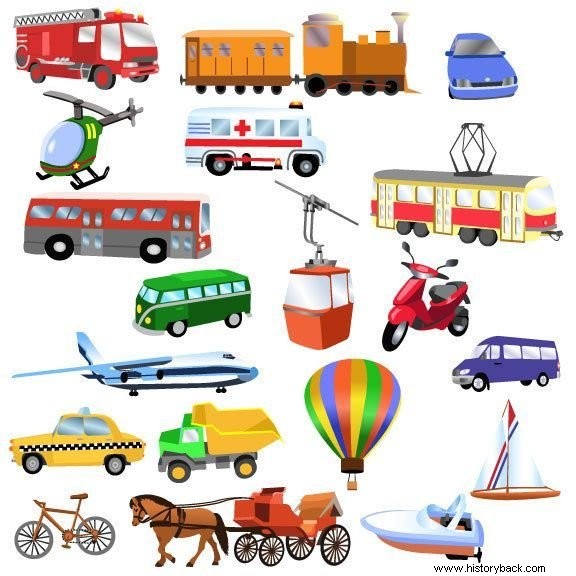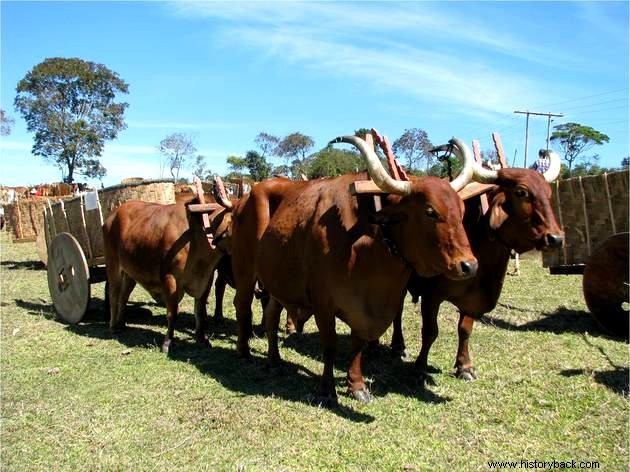The Means of Transport bring together the means intended for the transport of people or cargo, which can be land, river and air.
Thus, transport is a concept associated with the movement of goods and people from one place to another.
On the other hand, the means of transport represent the ways of getting around, using bicycle, train, bus, boat, among others.

History of the Means of Transport
The evolution of means of transport was essential for the development of humanity. In this way, the human being has always been attentive to the improvement of transport, whether to acquire food, carry out constructions, cross rivers, make war, etc.
There are controversies regarding the emergence of means of transport, however, the fact is that we have evolved a lot in this matter.
Nowadays it is relatively simple to think about taking a long trip by ship, plane or train to almost anywhere in the world, a fact that was previously considered unfeasible.
Means of Transport and Sedentary Lifestyle

In ancient civilizations, men were nomads and, therefore, the transport mechanism was their own legs.
During their lives, they walked around in search of food and shelter, until agriculture and animal domestication emerged. With this, comes the need to stay longer in the same place and thus, a sedentary lifestyle becomes essential for the evolution of means of transport.
It should be noted that the use of animals such as horses, camels, oxen, among many others, which were - and still are - used as a force to move transport, dates back to this period.
Even in prehistoric times, human beings already used aquatic means of transport, with long pieces of wood. Later, they managed to build dinghies and small boats.
Means of Transport and the Invention of the Wheel
With the invention of the wheel, about 6 thousand years ago, the development of means of transport intensifies. From that moment, part of humanity could transport more goods and people faster.
Even so, the wheel was not a universal achievement, as the first peoples of America never got to know the wheel and they didn't stop moving.
However, it was only after the First Industrial Revolution (18th century) that the quantity and efficiency of means of transport expanded, with the advancement of technology.
From the invention of the steam engine developed the locomotive that quickly spread to industrialized nations.
Later, with the creation of the fossil fuel engine, and the invention of the automobile, there was a real explosion of possibilities in the field of transport.
Types of Means of Transport
According to the means where the displacement is carried out, the means of transport are classified as:
- Terrestrial :they move on land (streets, roads, highways) being classified as rail, road and subway. Land transport can be train, bus, subway, car, motorcycle, truck, bicycle, among others.
- Aquatic :also called waterways , the aquatic means of transport move on the water, by means of boats, ships, ferries, canoes. They are classified as maritime (sea), fluvial (river) and lacustrine (lake).
- Aircraft :the means of air transport are those that move in the air, being considered the modality created recently and one of the fastest in the world. Examples:planes, helicopters, balloons and airships.
- Pipelines :also called tubular transport , this type of transport is done through tubes, to transport gases and fluids.
Curiosities
- The elevator is the safest means of transport in the world, and the plane is the second.
- The most used means of transport in Brazil is land and about 76% of the goods are transported by trucks.
Read more :
- Transport in Brazil
- Urban Mobility in Brazil
- Sustainable Cities
- Media
- Biofuels
- Henry Ford
Are you looking for a text for early childhood education? Also read:Means of Transport - Kids.
